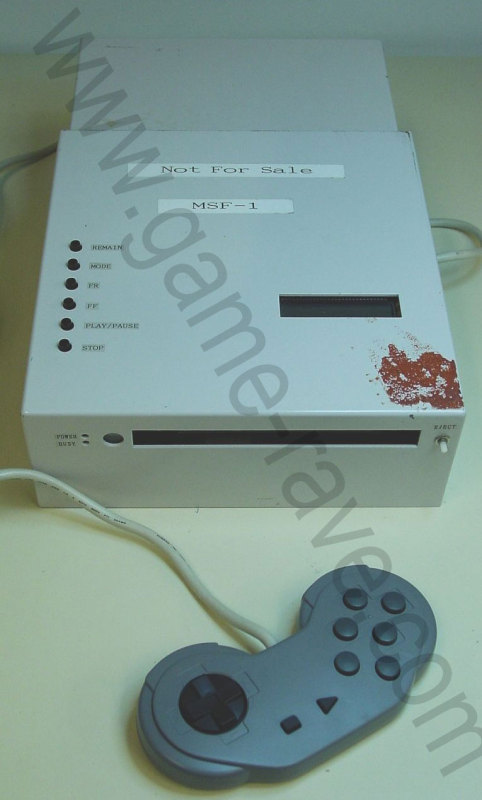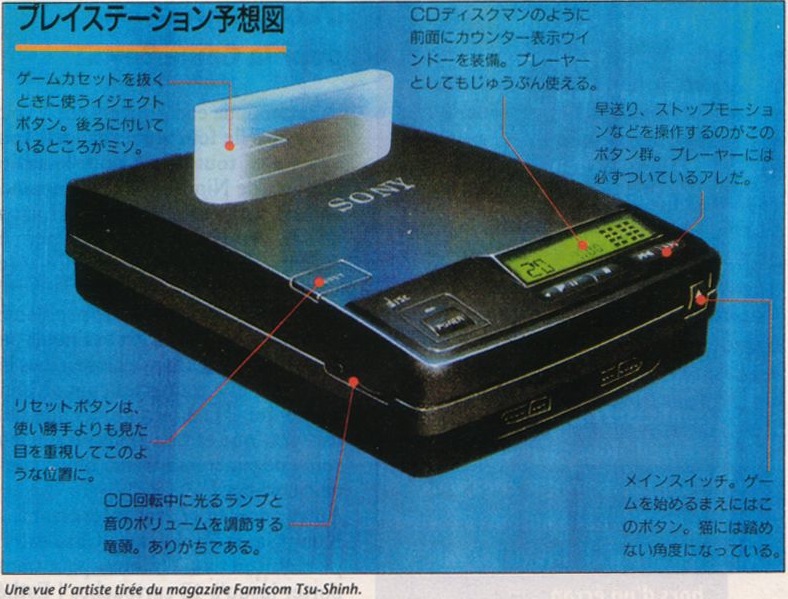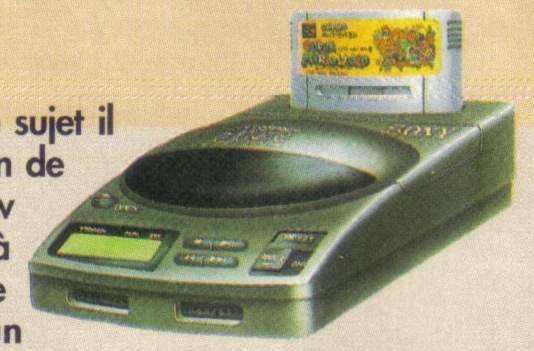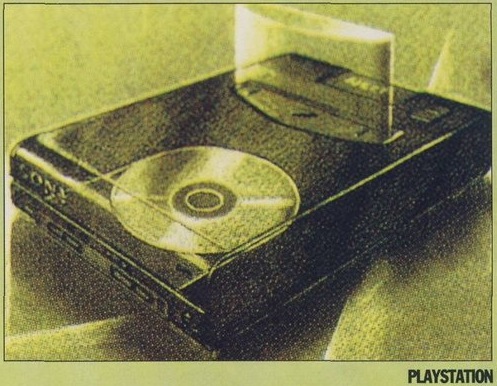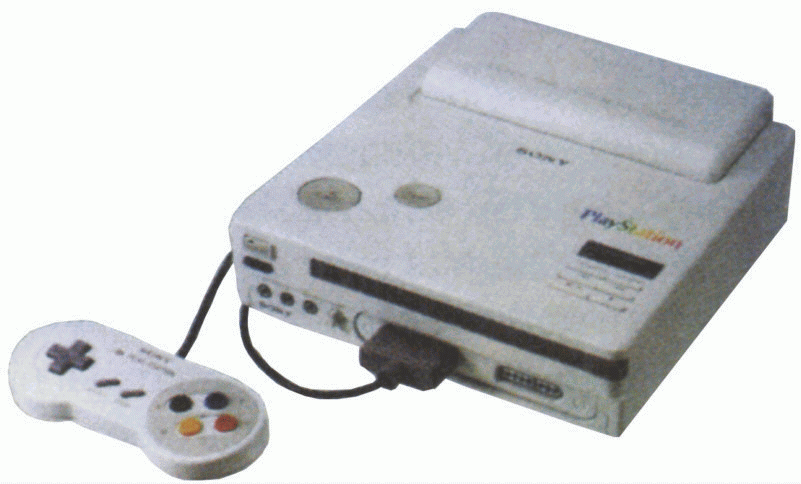Table of Contents
Sony PlayStation
- also known as: PS, PSX1), PS1, PSOne
Sony's PlayStation was the big boy of its console generation. It began as a CD-ROM add-on for the Super Nintendo Entertainment System. Nintendo approached Sony to develop it (and later Phillips) because of good relations regarding the Super Nintendo's sound chip, also made by Sony. Concurrently Sony began work on a system that would play SNES cartridge and CD based games, as well as its own software. The Super CD saga is well documented on the Internet, but most importantly, this was the beginning of the PlayStation.
Alternate introduction: Sony Playstations - Some Interesting Facts
Personality
Audio
As a member of the hardware generation that made optical media a standard the audio is often streamed of CD. So no one talks about the PlayStation's sound chip with the affection some may speak of the Mega Drive's, for example. And from its generation onwards consoles' sound chips all seem to lack identity.
Visual
The sort-of inept way it handles polygons is still charming. Unlike the Nintendo 64, the PlayStation doesn't really get perspective, so polygons have a habit of warping, and jittering. There's also some sort of wonderful balance between the amount of triangles it can output, and the quality of its non-smoothed textures. All these graphic elements combined can make things appear to be on the brink of collapse, and the more alive for it!
Design
The first hardware version is perhaps well described as a slightly 'cooler' (though it appears much less so now), less friendly SNES. Though the PSOne revision is 'cuter', more Dreamcasty.
Library
For the first phase or two of its life Sony focused on a really diverse software lineup. There are similarities to be drawn to the NES: both were the most popular consoles of a key era of hardware development. So the PlayStation has lots of experiments in 3-D, and in using the high capacity CD format. Rhythm games became a popular genre, it was the big RPG console, there are some icon stealth games–. It lacks a bit in the first-person shooter category, and the Saturn versions of 2-D games, particularly shooters and fighters, are usually superior. But, otherwise, there is a big glorious mess of interesting games to discover.
Prototypes, Concept drawings, and Artist's Impressions
Appearances
| Blockids2) |
|---|
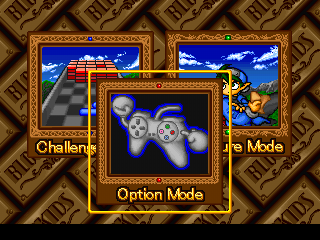 |
Models
Net Yaroze
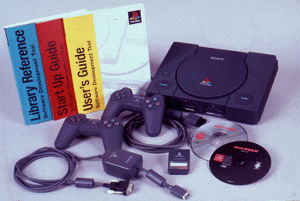 The Net Yaroze allows people to develop their own Playstation games, in C++. Gams are programmed on a computer (PC, Mac, or PC-98). The main drawback of the system is that games must fit in the Playstation's RAM, which, in practice, means 3.5MB.
The Net Yaroze allows people to develop their own Playstation games, in C++. Gams are programmed on a computer (PC, Mac, or PC-98). The main drawback of the system is that games must fit in the Playstation's RAM, which, in practice, means 3.5MB.
A compilation of known games, Net Yaroze Collection, is available to download.
- Net Yaroze on PS1 – we need YOU - Hardcore Gaming 101 blog post, by John Szczepaniak, detailing games.
- 15 Years Later: How Sony's Net Yaroze Kickstarted Indie Console Development - Gamautra article, by John Szczepaniak.
PS One
A smaller, somewhat friendlier, design, and released late in the systems era, as has become Sony's habit. It comes in a very light grey—almost white, and was packaged with a DualShock controller.
Periphera
Controllers
Dual Analog Controller
The short-lived precursor to the DualShock. The version released outside Japan has no vibration function, the 'handles' are slightly longer than the original controller and the DualShock, and the sticks have a concave top.
DualShock
NeGcon
Jogcon
Light Guns
Guncon / G-Con
Storage
Official Memory Cards
DexDrive
A device that interfaces between a PlayStation memory card, and a computer, allowing the user to transfer and swap saves. Very useful for a game like RPG Maker for trading creations.
A version was also made for the Nintendo 64.
PocketStation
Emulation
The Playstation now has a few good emulator options. Xebra, a Japanese emulator, is the most accurate and has the highest compatability. If a game does not run in another emulator, use this one. pSX may still be a useful option for those after an authentic Playstation experience.
If you want to have access to extra features, such as enhanced resolutions, then ePSXe, with its selection of plug-ins, is still a good option. Though PCSX-Reloaded may now edge it out compatibility wise.
Regarding plugins: both ePSXe and PCSX-Reloaded should come with Pete's or P.E.Op.S plugins which are inaccurate but feature rich. If you are interested in getting accurate emulation out of either of these emulators, check out edgbla's software renderer for graphics and the P.E.Op.S DSound 1.10b plugin for sound.
Last updated: May 27th, 2012
See also
- PlayStation Emulators - Playstation emulation downloads, and details, at Zophar's Domain.
- PSX Documentation Project - Complete technical information at Zophar's Domain.
- U R NOT (red)E - Article on the development of the PS logo, on Visual Attack Formation.
